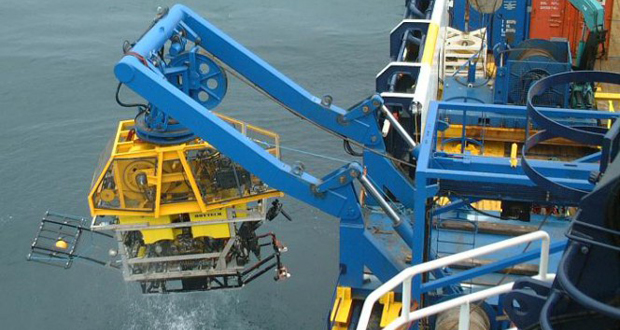DNV GL accepts underwater surveys of a ship’s bottom by means of remotely operated underwater vehicle (ROV) on a case by case basis.
A remote means of examination – typically an ROV – may be used to carry out relevant parts of the in-water bottom survey referring to the “Rules for Classification of Ships”. This survey typically involves an overall examination of underwater hull items, ie, the hull plating, stern frame, rudder and propeller.
In connection with periodical in-water bottom surveys, tasks such as measuring rudder bearing clearances or opening of access hatches and sea valves will have to be completed in the same way as a standard in-water survey, using divers.
When remote means of examination are applied, the following are to be complied with:
General
Remote methods applied are, in principle, to provide the survey results normally obtained during a survey carried out by a diver.
Proposals for the use of remote inspection methods are to be submitted to DNV GL (local station) for acceptance in advance of the survey. This acceptance covers the remote inspection method, and consequently does not cover whether the vessel may carry out a bottom survey afloat in lieu of a bottom survey in a dry dock.
Conditions
Survey by a diver may always be required by the attending surveyor if found necessary in order to carry out a satisfactory survey. The use of remote inspection methods may be restricted or limited where a record or indication of abnormal deterioration or damage to the ship’s structure appears. It may also be inapplicable if conditions are found during the course of the survey that affect the class of the ship. If the remote inspection reveals damage or deterioration that requires further examination, the surveyor may require a close-up examination to be undertaken by a diver or with the ship in dry-dock.
Procedures
The inspection is to be carried out by a qualified technician or technicians with adequate knowledge of hull structure inspections under the surveillance of a DNV GL surveyor. The attending surveyor(s) is/are to be fully informed about the firm’s proposed inspection plan.
The surveyor must be satisfied with the method of live pictorial representation and the method of localization of the ROV on the structure. Records of live pictorial representation, including the localization of the ROV, must ensure a reproducible review of the ROV’s “areas covered” and results. The position on the structure, viewing direction, present activity, results of the inspection, moving direction, etc. should be recorded.
For general requirements regarding bottom surveys and in-water surveys, reference is made to the Rules for Classification of Ships, Pt. 7, Ch. 1, Sec. 5.
For more information, click here.
Source: DNV GL




























































